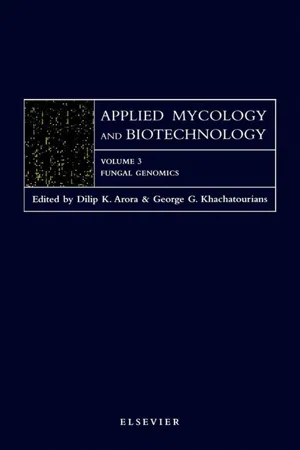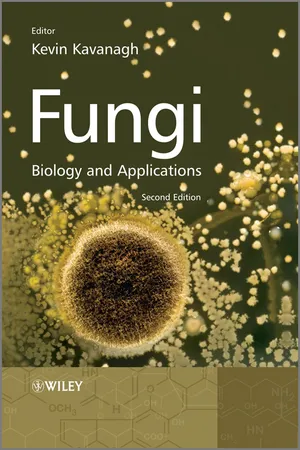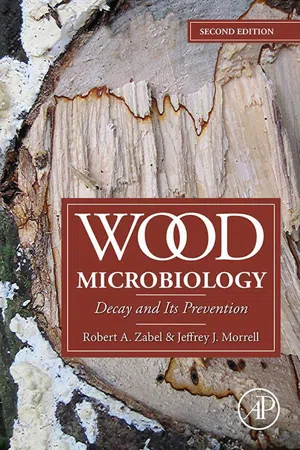Biological Sciences
Fungal Culture
Fungal culture refers to the process of growing and maintaining fungi in a controlled environment for research, identification, and production purposes. This involves providing the necessary nutrients, temperature, and humidity to support fungal growth. Fungal cultures are commonly used in various scientific fields, including microbiology, mycology, and biotechnology, to study fungal characteristics, behavior, and interactions with other organisms.
Written by Perlego with AI-assistance
3 Key excerpts on "Fungal Culture"
- eBook - ePub
- (Author)
- 2003(Publication Date)
- Elsevier Science(Publisher)
McCluskey, 2000 ). This emphasizes the long-term nature of collections. Some collections are considered to be ‘at risk’ and there are places for such collections to look for help. Among these are the national and international federations for culture collection.2.1 Categories of Fungal Culture collections
There are several categories of Fungal Culture collections. The first, and most common, is a type collection. This sort of collection emphasizes holding large numbers of species while having only a limited number of strains from an individual species. Collections of this type include the American Type Culture Collection and the Centraalbureau voor Schimmelcultures in The Netherlands.Another type of collection is a mission based collection such as the International Culture Collection of Arbuscular and Vesicular Arbuscular Mycorrhizal Fungi (INVAM) in West Virginia, or the Laboratory of Molecular Genetics and Breeding of Edible Mushrooms in Bordeaux, France. Collections such as this typically have a variety of strains whose biological characteristics have been cataloged without carrying out traditional genetics on the strains. Strains in collections such as this may have tremendous economic value because of their individual traits.Genetic culture collections, such as the Yeast Genetic Stock Center or the Fungal Genetics Stock Center (FGSC), typically emphasize a tremendous depth in one or a few organisms. The FGSC, by way of example, holds over 5,000 mutant strains, mainly of Neurospora. Among fungi, there are relatively few genetic collections, but there are many others for research organisms, such as Escherichia coli, Caenorhabditis elegans or Zea mays. While these collections are focused in their emphasis, they serve a broad constituency. They are also likely to have expanded to include molecular resources and to publish materials such as genetic maps or newsletters.The final type of collection is the Patent Depository (also called International Depository Authorities). These are collections who agree to hold materials according the Budapest treaty on the international recognition of the deposit of microorganisms for the purposes of patent procedure which was effective April 28, 1977. Briefly, this treaty was enacted to allow those seeking a patent that included a micro-organism to deposit the strain or strains in an internationally recognized repository and to hold certain rights to the strain while still allowing for the full disclosure required by the patent process. The collections that are Patent Depositories have to meet certain requirements, according to Article 7 of the Budapest Treaty. The ATCC was the first international depository, having gained approval on January 31, 1981 although the USDA Repository and ATCC have been accepting patented strains for deposit according to the rules of the United States Patent and Trademark Office since 1949. Most patent depositories are already recognized international repositories and there are 64 recognized patent depositories in operation. Many collections are actually hold several different types of collections under one roof and maintain differing degrees of separation among the subsets. For example, most Patent Depositories are established collections that hold patent strains along with their main holdings. - eBook - ePub
Fungi
Biology and Applications
- Kevin Kavanagh(Author)
- 2011(Publication Date)
- Wiley(Publisher)
In addition to the direct industrial exploitation of yeasts and fungi, it is important to note that these organisms, most notably the yeast Saccharomyces cerevisiae, play increasingly significant roles as model eukaryotic cells in furthering our fundamental knowledge of biological and biomedical science. This is especially the case now that numerous fungal genomes have been completely sequenced, and the information gleaned from fungal genomics and proteomics is providing valuable insight into human genetics and heritable disorders. However, knowledge of cell physiology is essential if the functions of many of the currently unknown fungal genes are to be fully elucidated. It is apparent, therefore, that fungi are important organisms for human society, health and well-being and that studies of fungal physiology are very pertinent to our understanding, control and exploitation of this group of microorganisms. This chapter describes some basic aspects of fungal cell physiology, focusing primarily on nutrition, growth and metabolism in unicellular yeasts and filamentous fungi. 1.2 Morphology of Yeasts and Fungi Most fungi are filamentous, many grow as unicellular yeasts and some primitive fungi, such as the chytridomycetes, grow as individual rounded cells or dichotomous branched chains of cells with root-like rhizoids for attachment to a nutrient resource. Here, we will consider the most common growth forms: the filamentous fungi and unicellular yeasts. 1.2.1 Filamentous Fungi The gross morphologies of macrofungi and microfungi are very diverse (see Plate 1.1). For example, we can easily recognize a variety of mushrooms and toadstools, the sexual fruiting bodies of certain macrofungi (the higher fungi Asomycotina and Basidiomycotina and related forms), during a walk through pasture or woodland - eBook - ePub
Wood Microbiology
Decay and Its Prevention
- Robert A. Zabel, Jeffrey J. Morrell(Authors)
- 2020(Publication Date)
- Academic Press(Publisher)
Schizophyllum commune , can develop typical sporophores after a few weeks in culture. The growth characteristics (macroscopic and microscopic) of the mycelial mats are often distinctive and traditionally were useful in the identification of the fungus. We are coming to understand that many other fungi cannot be cultured on synthetic media, although their DNA can be detected in the wood.DNA sequencing methods
Our understanding of fungal colonization of various wood substrates has changed dramatically as a result of the ability to sequence and identify the DNA present in a sample, although it has raised almost as many questions as it has answered as researchers attempt to determine the roles of these non-culturable fungi. The development of the polymerase chain reaction (PCR) and the identification of highly conserved sections of fungal r- DNA, known as Internal transcribed spacer (ITS) 1 or 4, that could be used as a template to amplify fungal DNA represented a major breakthrough in the ability to determine the organisms present in a system. In this process, DNA is extracted from an organism and purified. The DNA is denatured to separate the individual strands then this mixture is exposed to reactants that result in the production of numerous copies of the parent DNA. This material is then sequenced and the resulting sequences can be compared with previously identified sequences of known fungi. This allows identification of known fungi without the need for classic mycological methods. This approach still has its drawbacks because it requires the isolation of a single fungus, but the more recent development of high throughput sequencing techniques where all the DNA of a given group is sequenced and then identified has opened new horizons concerning the organisms present in a given substrate.
Index pages curate the most relevant extracts from our library of academic textbooks. They’ve been created using an in-house natural language model (NLM), each adding context and meaning to key research topics.
Explore more topic indexes
Explore more topic indexes
1 of 6
Explore more topic indexes
1 of 4


